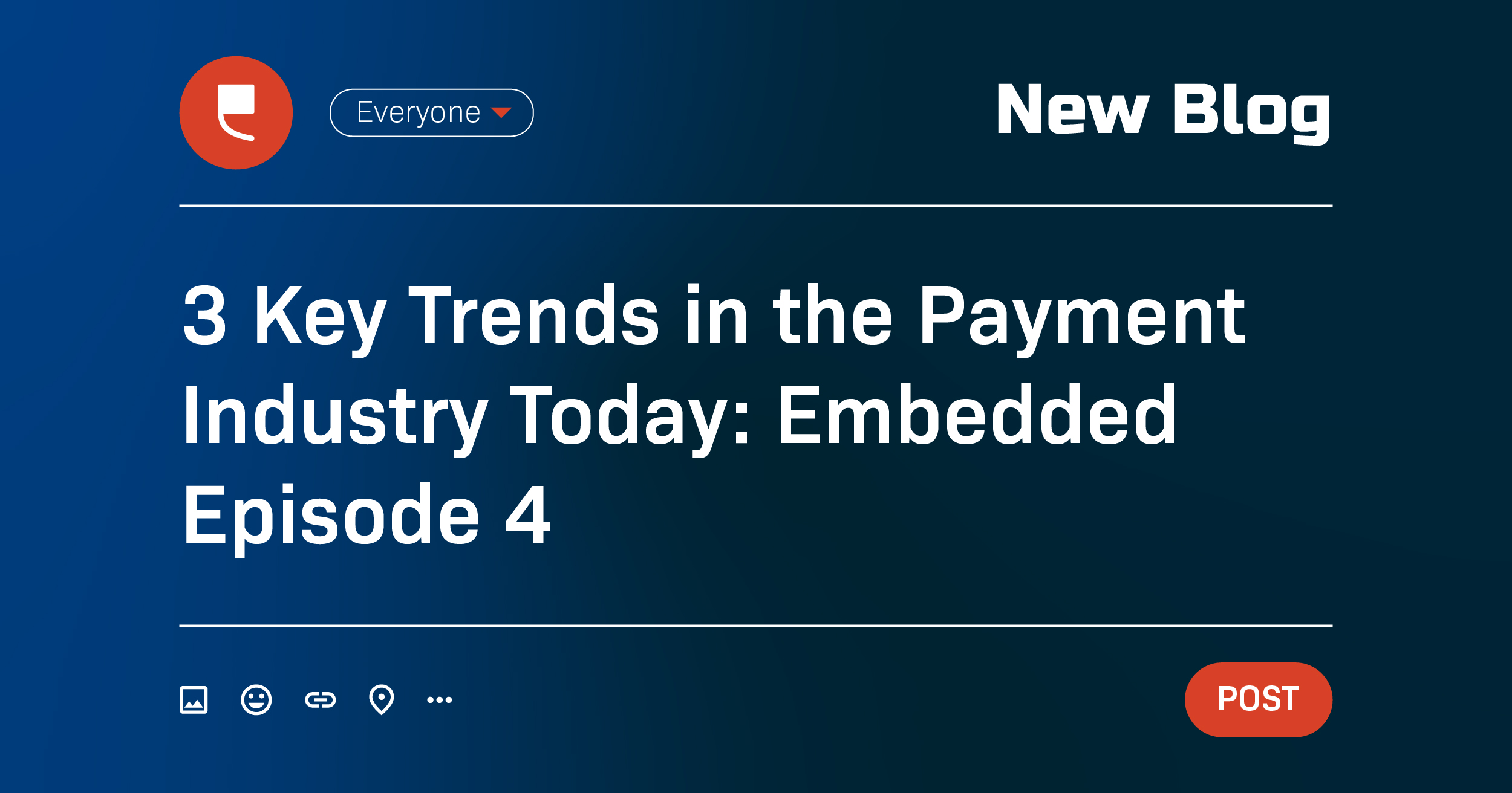
3 Key Trends in the Payment Industry Today: Embedded Episode 4
In episode 4 of our monthly Embedded podcast, Josh Istas, the Senior Director of Product Strategy at TSG, and Timmy Nafso, Fortis Executive Vice President, discussed the evolution of payments—and what merchants and ISVs need to know about current payment trends.
The fact is, a frictionless payment system has become more than just “nice-to-have.” New consumer expectations and developer requirements are driving this revolution in the payments industry.
Below we’ve summarized three critical trends covered in the episode.
1 – Payments are more than a commodity
Initially, merchants and ISVs viewed payments primarily as a commodity. Payment software was largely a separate product, disconnected from the merchant site. However, this perception has changed as consumer demand for an enhanced payment experience has increased.
For ISVs, offering embedded payment features that ensure that the payment process is frictionless for consumers is paramount. Payments now allow merchants to strengthen branding and provide consumers with an effortless payment experience, contributing to customer retention and satisfaction.
Therefore, payments have transitioned from a commodity to a key differentiator for software providers and merchants.
2 – Integration documentation should be easy to use
Payment functions require access to sensitive merchant and consumer data, placing pressure on developers to ensure strong data security. At the same time, developers must prioritize a payment solution’s ease of use and white-label options.
Detailed integration documentation enables developers to easily review and add payment solutions to their software. Documentation should be properly categorized and detailed with as much information as possible to ensure developers can troubleshoot effectively. It also allows development teams to discuss app architecture in detail and find additional methods of improving overall software functionality and security.
At the end of the day, solid documentation makes it possible for developers to remain self-sufficient and accelerate the integration process.
3 – What does the consumer want?
Consumer expectations for payment processes and options have dramatically evolved over the years. For example, 53% of Americans now use digital wallets as much as traditional payment methods, and 51% said they wouldn’t shop at a merchant that didn’t offer digital wallet payment options. Along with digital wallets, the number of Americans leveraging buy now, pay later (BNPL) services increased by one-third, according to the Federal Reserve Bank of Atlanta.
While merchants have driven the demand for payment innovation for decades, consumers are now the primary force advocating for an enhanced payment experience. Embedded payments, loyalty programs, BNPL, and alternative payment methods are rapidly becoming the norm due to consumer feedback.
However, embedded payment systems are not a one-size-fits-all approach. The individual payment processes and products must be tailored to each ISV or merchant’s customer base. Relying on surveys to gauge customers’ expectations is one method, but data often provides better insight. For an ISV or merchant to take advantage of hard numbers, however, it’s important to have a payment solution that offers robust analytics and business intelligence capabilities.
Leveraging the power of payments
A frictionless and flexible payment experience is no longer just a competitive advantage—it is mandatory for survival. Merchants and consumers expect streamlined and secure payment options, while developers require comprehensive documentation to effortlessly implement new solutions.
As an award-winning payment platform, Fortis understands the importance of the payment journey. To learn more, discover the Fortis difference at fortispay.com.

